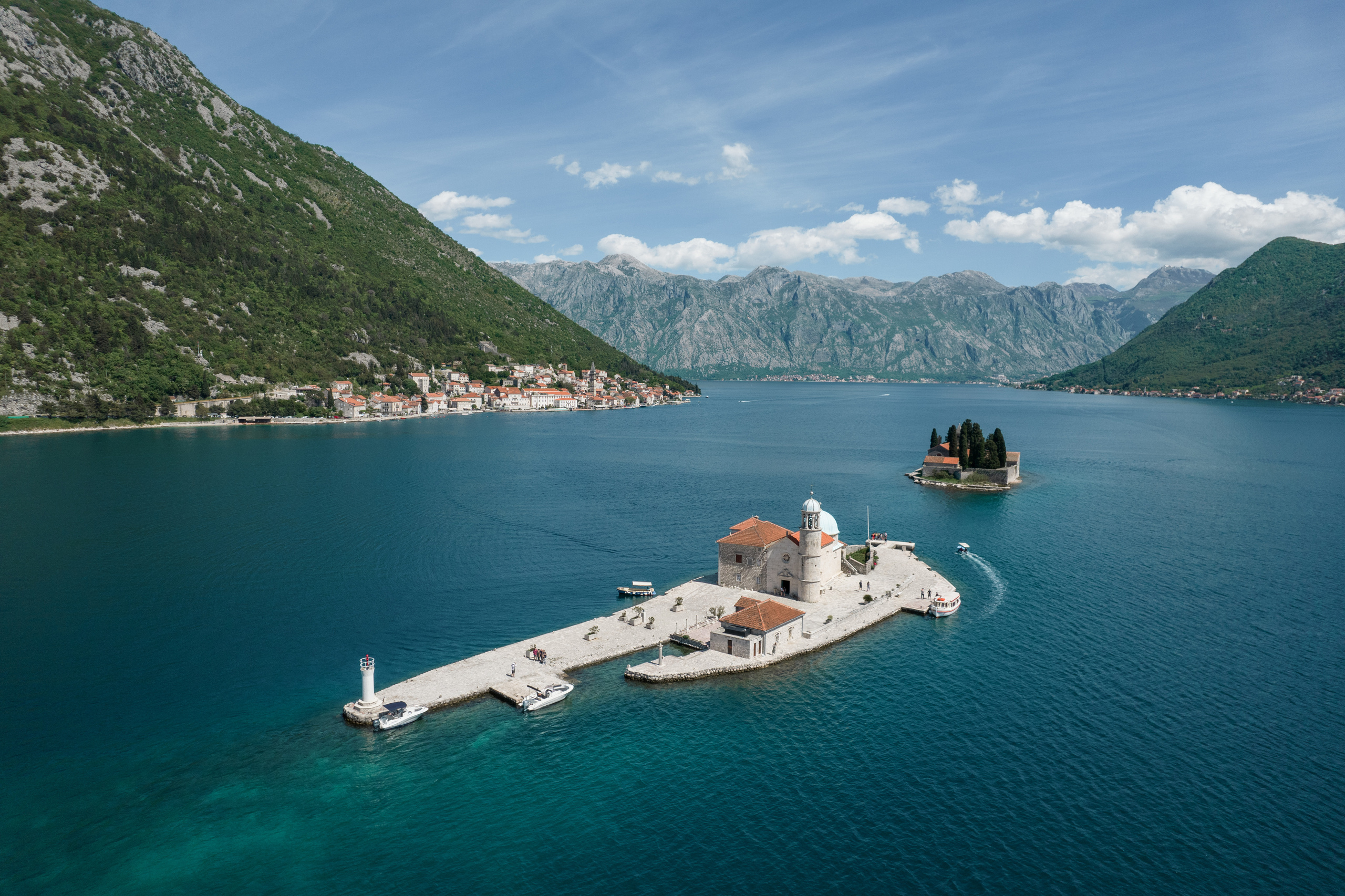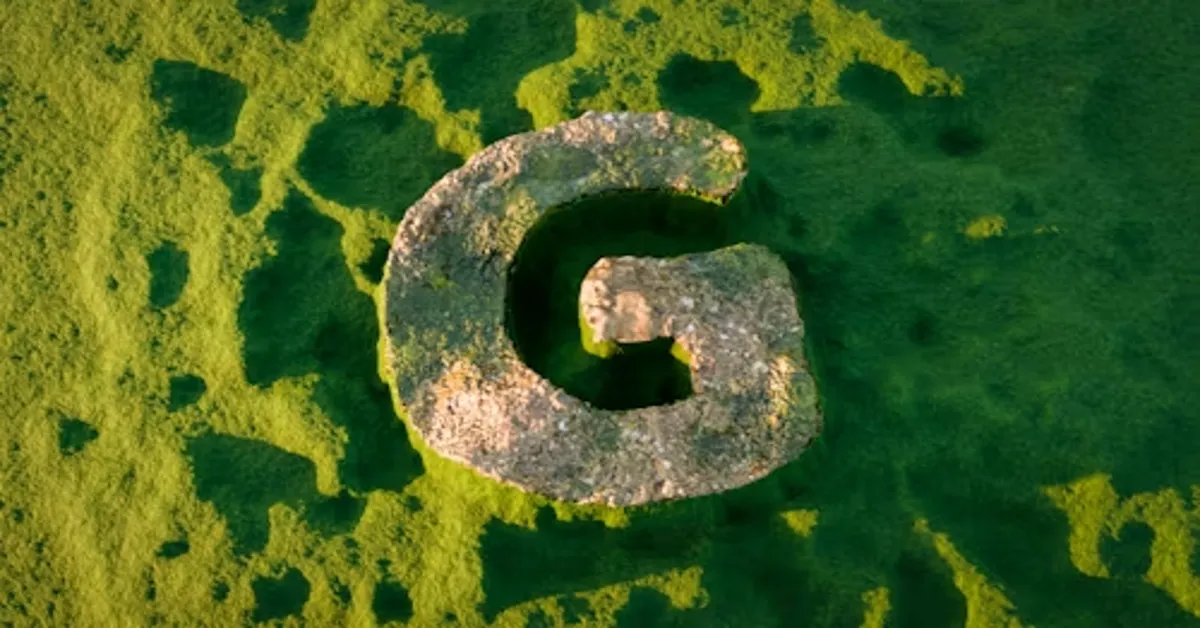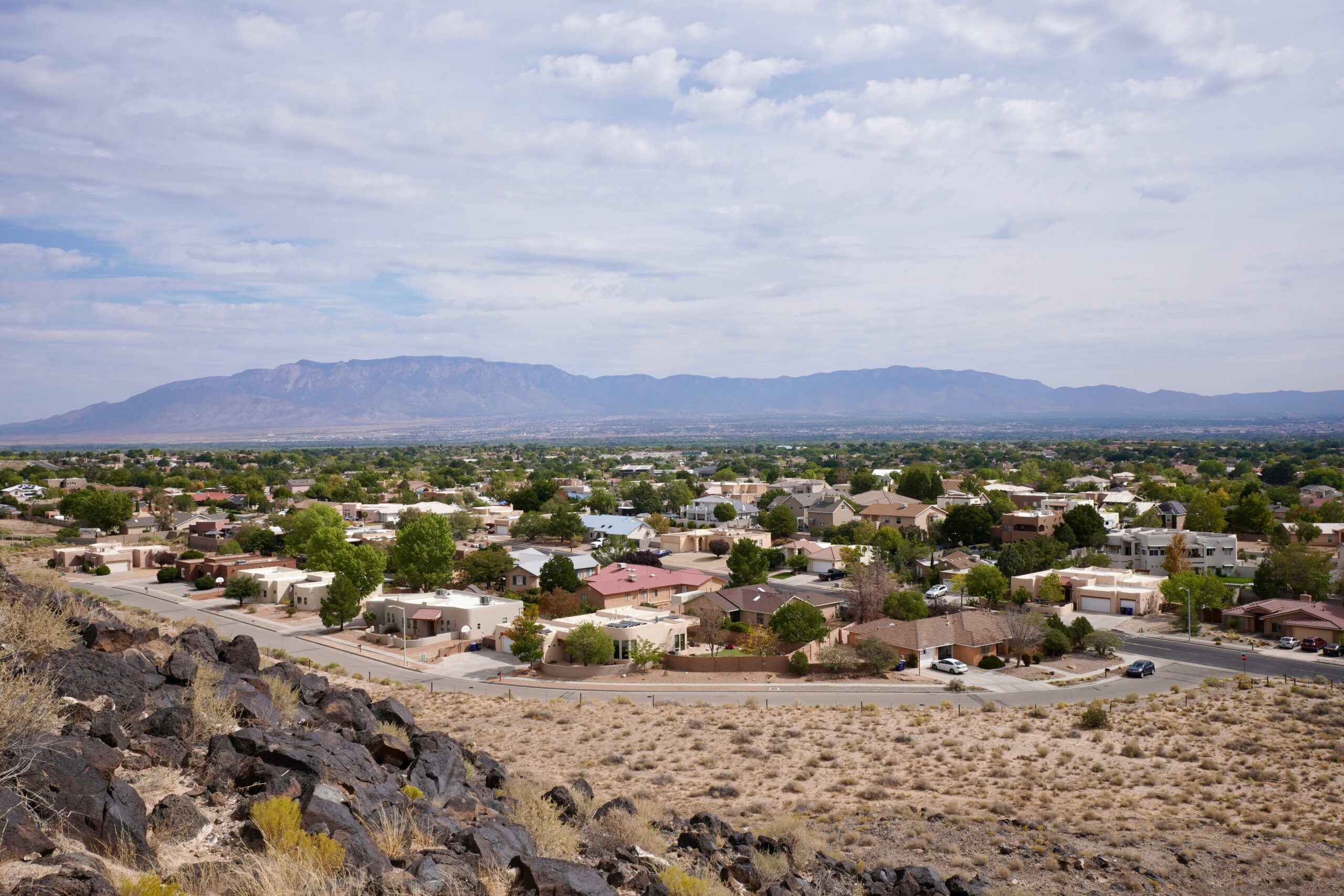Travel
Kotor Montenegro: A Jewel of the Adriatic Coast
Published
2 months agoon
By
Harry
Nestled between towering limestone cliffs and the shimmering waters of the Adriatic Sea lies Kotor, Montenegro – a medieval walled city that seems frozen in time yet pulses with modern vitality. This UNESCO World Heritage Site offers travelers a mesmerizing blend of natural splendor, Venetian architecture, and rich Balkan history, making it one of Europe’s most captivating destinations.
A City Carved Between Mountains and Sea
Kotor’s dramatic setting is its first breathtaking feature. Located in a secluded part of the Bay of Kotor (Boka Kotorska), the city is surrounded by fortifications built during the Venetian period 2. The bay itself is often mistaken for Europe’s southernmost fjord, though it’s technically a ria – a submerged river canyon 2. Sheer cliffs of Mount Lovćen and Orjen frame the deep blue waters, creating landscapes that have inspired poets and painters for centuries.
The natural beauty extends beyond the bay. Lush greenery blankets the mountainsides, offering countless opportunities for hiking, climbing, and mountain biking 3. One of the most rewarding (and challenging) activities is the climb up Kotor’s ancient city walls – a 4.5-kilometer ascent with over 1,350 steps that leads to the Fortress of St. John, offering panoramic views that make every strenuous step worthwhile 3.
A Living Museum of History
Kotor’s history reads like a tapestry of Mediterranean civilizations. Founded as Acruvium in Roman times, the city has been ruled by Byzantines, Serbs, Venetians, Austrians, and French before becoming part of modern Montenegro 2. Each era left indelible marks:
- Venetian Legacy (1420-1797): Four centuries of Venetian rule gifted Kotor with its distinctive architecture – elegant palaces, churches, and squares that earned its UNESCO designation 2. The Venetian influence created a unique blend where East meets West in harmonious architectural fusion 3.
- Medieval Splendor: The Old Walled City, a UNESCO site since 1979, transports visitors back to the Middle Ages with its labyrinth of narrow cobbled streets, medieval buildings, and ancient churches 3. The 9th-century walls stretch up the mountainside, a testament to the city’s strategic importance 3.
- Religious Heritage: From the Romanesque St. Tryphon Cathedral (the city’s patron saint) to Orthodox churches and monasteries, Kotor’s spiritual landmarks reflect its diverse cultural influences 3.
Experiencing Kotor Today
Modern Kotor balances preservation with vibrant tourism:
Cultural Exploration:
- Wander the car-free Old Town’s marble streets, discovering hidden piazzas and Venetian-era buildings
- Visit the Maritime Museum to understand Kotor’s seafaring history
- Explore nearby Perast, a picturesque baroque town with twin island churches 3
Outdoor Adventures:
- Take boat trips through the bay’s secluded coves
- Kayak along the dramatic coastline
- Hike trails offering breathtaking vistas 3
Gastronomic Delights:
- Sample fresh Adriatic seafood and Montenegrin wines
- Try local specialties like njeguški pršut (smoked ham) and cheese
- Enjoy waterfront dining with views of illuminated medieval walls 3
Preservation Challenges
Kotor faces modern pressures threatening its heritage. Rapid development, inadequate legal protections, and changing economic conditions have led to the devastation of traditional stone architecture that characterized the bay area for centuries 5. Organizations like EXPEDITIO work to promote sustainable development and preserve Kotor’s cultural landscape through research and advocacy 9.
Urban planning studies emphasize the need for criteria that balance development with preservation, particularly for coastal settlements where construction pressures are intense 11. The Management Council for the Natural and Culturo-historical Region of Kotor oversees these efforts to maintain the area’s UNESCO status 9.
Why Kotor Captivates
What makes Kotor special isn’t just its postcard-perfect scenery or remarkably preserved history – it’s the palpable sense of timelessness. As dusk falls and the city walls glow golden against the darkening mountains, visitors understand why this Adriatic gem has inspired awe for millennia. Whether you’re scaling ancient fortifications, savoring local wines, or simply losing yourself in medieval alleyways, Kotor offers that rare travel experience that lingers in memory long after departure 3.
You may like
Travel
Understanding Giniä: A Deep Dive into Its Origins and Significance
Published
1 month agoon
July 17, 2025By
Harry
Giniä has roots that stretch back through various cultures, often linked to themes of balance and harmony. Its etymology reveals layers of meaning that have evolved over time, connecting it to concepts of equality and interconnectedness.
As societies change, so does the significance of giniä. Today, it serves as a reminder of our shared humanity. This powerful word encapsulates ideas that resonate across different contexts, making it relevant in discussions about social justice and community values.
Introduction
Giniä is a term that has captured the attention of many, yet its full meaning often eludes us. This intriguing concept blends cultural significance with modern relevance, making it a fascinating topic to explore.
As society evolves, so does our understanding of giniä. Its origins and applications reveal layers of meaning that resonate across different contexts and communities. Discovering the depth behind this word can offer insights into how we connect with one another today.
What Is Giniä, Exactly?
Giniä is a term that has sparked curiosity across various fields. It embodies complex ideas and concepts, often related to balance and harmony in different contexts.
At its core, Giniä captures a unique essence that resonates with many people. Whether used in art, philosophy, or social discourse, it invites exploration and understanding of deeper meanings behind everyday interactions. The intrigue around Giniä continues to grow as more individuals become familiar with its rich implications.
Giniä’s History and Foundations
Giniä’s roots can be traced back to ancient civilizations, where it emerged as a term representing balance and equilibrium. This concept was pivotal in various cultural contexts, often linked to social justice and equality.
As societies evolved, Giniä adapted alongside them. Its significance transformed with the rise of modern economics and social sciences, reflecting shifting paradigms around fairness and distribution. Today, it embodies more than just a word; it’s a lens through which we examine contemporary issues.
Giniä in Culture and Language
Giniä resonates deeply within various cultures, often symbolizing connection and unity. Its roots can be traced back to ancient traditions that emphasize collaboration and shared experiences.
In language, Giniä transcends simple translation. It embodies emotions and concepts unique to each culture, reflecting diverse perspectives on community and togetherness. As people share their interpretations, Giniä evolves, weaving itself into the fabric of daily life across different regions.
Giniä’s Modern Applications
Giniä has found its way into various modern applications, influencing sectors like technology and wellness. The concept is often incorporated in software design, helping to create user-friendly interfaces that enhance overall experience.
In the realm of personal development, Giniä serves as a guiding principle for mindfulness practices. People are using it to frame their goals and aspirations more effectively, creating a harmonious balance between ambition and well-being.
Is Giniä a Concept or a Product?
Giniä straddles the line between a concept and a product. On one hand, it embodies ideas of innovation, creativity, and cultural significance. It serves as an abstract representation of values that resonate with people.
On the other hand, Giniä has materialized into various products and services in today’s market. This duality allows consumers to connect emotionally while also engaging with tangible items associated with the term. It’s this blend that makes Giniä intriguing.
How Giniä Is Being Used Today
Giniä is making waves across various sectors today. From technology to fashion, its influence can be seen in innovative products and marketing strategies. Brands leverage the term to capture attention and resonate with modern consumers.
Social media plays a significant role in this phenomenon. Influencers use giniä to create relatable content, sparking conversations that reflect current trends. This buzz amplifies its relevance, keeping it at the forefront of cultural discourse.
The Significance of the Word Behind It
The term “giniä” carries a weight that transcends its surface meaning. It encapsulates ideas, emotions, and cultural nuances that resonate deeply within various communities. This richness adds layers to conversations surrounding it.
Understanding its significance allows individuals to appreciate the subtleties in communication. The word can evoke nostalgia or inspire change, depending on context. Its power lies not just in what it represents but how it influences interactions among people today.
Popularity and Usage
Giniä has gained traction in various communities, often appearing in conversations around innovation and creativity. Its unique sound and connotation resonate with many, making it a favorite for expressing modern concepts.
Social media platforms are buzzing with Giniä-related content. Users incorporate it into memes, hashtags, and discussions, driving its popularity further. Brands also latch onto this trend to connect authentically with their audience, showcasing how versatile and impactful the term can be in today’s culture.
Popular Uses of Giniä in Daily Life
Giniä has woven itself into the fabric of daily life, often appearing in conversations and social settings. People use it to express feelings of balance or harmony, creating a relatable connection with others.
From casual chats to professional discussions, Giniä adds depth. It’s not just a word; it’s become a way for individuals to articulate their thoughts and experiences uniquely. As people embrace its meaning, Giniä’s relevance continues to grow in everyday interactions.
Giniä in Trends on Social Media
Giniä has recently surged in popularity across various social media platforms. Users are embracing the term to express feelings, experiences, and even lifestyle choices.
Trending hashtags often include giniä, sparking conversations and creating a sense of community among followers. Influencers are also incorporating it into their content, further amplifying its reach and significance in today’s digital landscape.
How Brands Are Embracing Giniä
Brands are increasingly recognizing the allure of giniä. They weave it into their marketing campaigns, attracting a diverse audience eager for authenticity and connection. This term resonates, fostering feelings that consumers can relate to.
From fashion labels to tech companies, businesses leverage giniä as a symbol of innovation and creativity. By adopting this concept, brands not only enhance their identity but also create communities around shared values and experiences in today’s fast-paced market landscape.
Is Giniä More Than Just a Catchphrase?
Giniä has undeniably captured attention, sparking conversations across various platforms. Initially perceived as a trendy term, its depth goes beyond mere catchphrases.
This word encapsulates values and ideas that resonate with many people. Its versatility allows it to fit into various contexts, making Giniä more than just a fleeting moment in popular culture. It reflects aspirations and connections that linger long after the trend fades away.
Comparative Analysis
Giniä stands out in a landscape filled with similar concepts. While terms like “equity” and “fairness” often collide, Giniä offers a unique perspective that resonates deeply within various contexts. Its versatility sets it apart, making it applicable to discussions ranging from economics to social movements.
Comparing Giniä with these words reveals layers of meaning that enrich conversations. Understanding these distinctions allows for more nuanced dialogue about its implications in our daily lives.
Giniä vs. Similar Words
Giniä shares its phonetic charm with several similar words, yet it stands apart in meaning and significance. Words like “genius” or “genuine” may hint at brilliance or authenticity, but Giniä carries a unique essence that resonates differently.
This distinctiveness is what makes Giniä intriguing. While other terms might evoke common themes of intelligence or truthfulness, Giniä encapsulates something deeper—an emotional connection that transcends mere definition.
Emotional Impact and Future Prospects
The term giniä evokes a range of emotions, from curiosity to inspiration. Its unique sound and meaning often spark discussions that resonate deeply within communities. People find connection through shared experiences tied to the word.
Looking ahead, giniä shows promise as it continues to evolve in usage and context. As societal values shift, this term may take on new significance, influencing conversations across various platforms and shaping future trends in unexpected ways.
Impact of the Term on Emotions Giniä
The term giniä evokes a range of emotions, often sparking curiosity and intrigue. Its unique sound and meaning can inspire feelings of connection and belonging among those who encounter it.
As individuals explore the concept further, they may find themselves reflecting on their own experiences. It resonates deeply, prompting discussions around identity and culture. This emotional impact drives its relevance in contemporary conversations, making it more than just a word but a catalyst for personal exploration.
What the Future Holds for Giniä
The future of Giniä is poised for exciting developments. As awareness grows, more people will explore its meanings and applications across various fields.
Innovations in technology and culture may lead to new interpretations of Giniä, enhancing its relevance in modern conversations. This evolution could shape how we perceive connections and experiences tied to the term, making it a staple in personal and professional contexts alike.
Conclusion
Giniä has emerged as a multifaceted concept that transcends simple definitions. Its rich history, cultural significance, and widespread applications in modern life showcase its importance. As brands and individuals alike embrace giniä, the term continues to evolve, shaping our interactions and perceptions.
The emotional resonance of giniä adds depth to its usage. It encapsulates trends while also inviting deeper connections among communities. The future looks promising for this intriguing word as it remains embedded in conversations across various platforms. Embracing giniä means engaging with something larger than just a fleeting trend—it’s about understanding the values it represents and how they connect us all.
Travel
What Happened During United Airlines Flight UA770 Emergency Diversion?
Published
2 months agoon
July 14, 2025By
Harry
On a routine flight, the unexpected can happen in an instant. United Airlines Flight UA770 experienced just that during its recent journey. What began as a typical transatlantic voyage quickly transformed into a heart-pounding tale of emergency and quick thinking. Passengers braced themselves as their aircraft was forced to divert mid-flight, leaving everyone wondering what would come next.
This incident offers valuable insights into airline safety protocols and crisis management strategies. With every second counting, pilots and crew members faced challenges head-on while ensuring passenger safety remained their top priority. As we delve deeper into the events surrounding this dramatic diversion, you’ll gain an inside look at how modern aviation handles emergencies like these and what it means for travelers everywhere. Buckle up; it’s going to be quite the ride!
United Airlines Flight UA770 Emergency Diversion: An Inside Look
United Airlines Flight UA770 embarked on its journey with high hopes and eager passengers. As it soared over the Atlantic, everything appeared to be operating smoothly. However, within moments, that sense of normalcy was shattered by an unexpected emergency situation.
The crew quickly assessed the circumstances, realizing a diversion was necessary for safety reasons. Their training kicked in as they communicated effectively with air traffic control and prepared for an unscheduled landing at London Heathrow Airport. Coordinated efforts ensured that everyone aboard remained calm during what could have been a chaotic moment.
Passengers were informed about the situation through clear announcements from the flight attendants and pilots alike. This open line of communication helped alleviate anxiety as travelers processed what was happening outside their windows—clouds giving way to city lights much sooner than anticipated.
As they approached Heathrow, passengers embraced a mix of relief and uncertainty. The swift decision-making by the flight crew demonstrated professionalism under pressure while highlighting how critical protocols are when responding to emergencies mid-flight.
In-Flight Emergency Forces United Airlines Flight UA770 to Divert to London
On a routine journey, United Airlines Flight UA770 encountered an unexpected situation that led to an emergency diversion. The flight was en route from New York’s Newark Liberty International Airport to Frankfurt, Germany when complications arose mid-air. Passengers were likely unaware of the seriousness of the scenario unfolding in the cockpit.
As concerns mounted among crew members about safety, critical decisions had to be made swiftly. Communication with air traffic control became vital as pilots assessed their options and confirmed that diverting to London would ensure passenger safety. This split-second decision highlighted the importance of training and preparedness for airline personnel during emergencies.
The choice to land at London Heathrow allowed for immediate medical assistance if needed while minimizing risks associated with continuing on course. Passengers remained seated as they listened intently for updates from cabin crew, who worked diligently to keep everyone calm amid rising tension.
In such situations, every second counts. The diligence and expertise demonstrated by the UA770 flight crew served as a reminder of how crucial quick thinking is during in-flight emergencies—ensuring everyone onboard remained safe until they reached solid ground once again.
How Pilots Reacted Swiftly in Handling Mid-Air Complications
When faced with mid-air complications during United Airlines Flight UA770, the pilots showcased remarkable composure and skill. Their training kicked in immediately, allowing them to assess the situation effectively. Every second counts in emergencies like these, and they quickly gathered vital information before making decisions.
Communication played a crucial role in their response. The cockpit crew maintained constant contact with air traffic control while also informing cabin staff about the developments. This ensured that everyone on board was aware of what was happening and could prepare accordingly.
The pilots executed emergency protocols seamlessly. They swiftly initiated a controlled descent to reduce altitude while keeping passengers’ safety at the forefront. By prioritizing calmness and clarity, they managed to avoid panic among travelers who might have otherwise been anxious.
In times of crisis, experience is invaluable. The flight crew relied on their extensive training to navigate through turbulence both literally and figuratively. Their decisive actions not only stabilized the aircraft but also reassured passengers that help was on its way as they diverted towards London for an unscheduled landing.
Passenger Experience and Safety Measures During the Incident
As United Airlines Flight UA770 faced an unexpected emergency diversion, the experience for passengers shifted dramatically. Initially filled with anticipation, travelers quickly sensed the tension in the cabin as crew members communicated vital information. The atmosphere altered from routine to urgent within moments.
Flight attendants acted promptly, ensuring that all safety measures were implemented efficiently. They reassured passengers while demonstrating calmness amid uncertainty. Essential protocols kicked in; safety briefings were reiterated, and emergency exits were highlighted once more.
Passengers reported feelings of anxiety mixed with trust in the crew’s professionalism. Many recalled how their hearts raced yet remained comforted by the airline staff’s swift actions. Fellow travelers exchanged nervous glances but also offered mutual support through shared experiences during this unsettling time.
Despite the panic, communication played a critical role throughout this incident. Updates flowed from pilots to flight attendants and then to those on board via clear announcements about what was happening next—an effort that kept everyone informed and engaged as they navigated a challenging situation together.
United Airlines’ Official Response and Public Reaction to the Diversion
United Airlines promptly addressed the emergency diversion of Flight UA770 through a formal statement. The airline emphasized its commitment to passenger safety and expressed gratitude for the professionalism displayed by the flight crew during this unexpected situation. They assured travelers that all protocols were followed diligently, ensuring everyone aboard was safe.
Public reaction varied widely on social media platforms after news of the incident spread. Many passengers praised the quick actions of the pilots and cabin crew, highlighting their calm demeanor in a tense situation. Others shared concerns about transparency regarding what led to such an emergency.
United Airlines engaged with users online, responding to inquiries and providing updates as more details emerged. This proactive communication helped alleviate some anxiety among worried family members waiting for information about loved ones onboard.
The incident sparked conversations about airline safety standards across various forums. While many recognized United’s efforts in managing emergencies effectively, others called for increased measures to prevent such situations from occurring in future flights, focusing on how airlines can further enhance passenger security during air travel.
Lessons Learned from UA770: Ensuring Passenger Safety in Emergency Situations
The emergency diversion of United Airlines Flight UA770 highlighted critical lessons in passenger safety protocols. The incident served as a reminder that preparation is key. Airlines need to continually assess and update their emergency procedures, ensuring that every crew member is well-versed in handling unexpected situations.
Training plays a vital role in managing crises effectively. Regular simulations can prepare pilots and cabin crew for various scenarios, enabling them to act swiftly when real emergencies arise. The professionalism displayed during the UA770 incident showcased the importance of ongoing education.
Communication with passengers also significantly impacts safety perceptions during emergencies. Clear instructions help alleviate anxiety and ensure everyone knows what actions to take while maintaining order on board. This enhances trust between passengers and the airline staff.
Collaboration among aviation authorities cannot be overlooked. Sharing insights from incidents like UA770 fosters an environment where best practices are developed across the industry, ultimately leading to safer skies for all travelers.
The Technology Behind Squawk 7700 Emergency Codes and Real-Time Communication Systems
Squawk 7700 is a universal code used by pilots to signal an emergency situation. When activated, it alerts air traffic control (ATC) that immediate assistance is needed. This simple four-digit code can mean the difference between chaos and organized response during critical moments.
The technology behind this system relies heavily on transponders aboard aircraft. These devices communicate with ATC radar systems, transmitting vital information such as altitude and location in real-time. By using Squawk 7700, pilots can quickly inform ground personnel of their distress status without needing verbal communication.
Real-time communication systems play a pivotal role in managing mid-air emergencies like the one experienced during United Airlines Flight UA770. Advanced satellite communications allow for quick updates between cockpit crews and ground support teams, ensuring that everyone stays informed about the evolving situation.
As incidents unfold, effective real-time data exchange enhances situational awareness for both pilots and controllers. The integration of these technologies not only streamlines responses but also significantly improves passenger safety during unforeseen events in the sky.
Airline Preparedness and Collaborative Efforts in Crisis Management
Airline preparedness is crucial in managing crises effectively. The unexpected can happen at any moment, and a well-thought-out response plan can make all the difference. Airlines invest significantly in training their staff to handle emergencies, ensuring that crew members are equipped with the skills needed for various scenarios.
Collaboration among airlines, governments, and emergency services is essential during incidents like the United Airlines Flight UA770 emergency diversion. These organizations work together to create protocols that streamline communication and resource allocation during crises. This teamwork not only enhances safety but also reassures passengers.
Simulation drills play a vital role in this preparation process. They allow flight crews to practice responses to different situations without real-world consequences. These rehearsals build muscle memory so that when an actual emergency occurs, everyone knows their roles instinctively.
Incorporating feedback from past events further strengthens crisis management strategies. Each incident provides valuable lessons on what worked well and what didn’t, allowing airlines to refine their approaches continuously. By learning from experience and adapting accordingly, they ensure better outcomes for future emergencies.
Industry Trends and Insights on Emergency Diversions
Emergency diversions are becoming more frequent in the aviation industry, highlighting a growing need for proactive safety measures. Airlines are increasingly investing in advanced training programs for pilots and crew to enhance their skills during critical situations. This focus on preparedness is essential as air travel continues to grow globally.
Another trend is the integration of cutting-edge technology into flight operations. Modern aircraft are equipped with real-time communication systems that allow crews to stay connected with ground control. This innovation enables quicker decision-making when emergencies arise, ensuring passenger safety is prioritized.
Airlines are also collaborating more closely with airport authorities and emergency services. Such partnerships facilitate smoother responses during emergencies, minimizing disruptions for passengers and crews alike. Regular drills simulating various scenarios help refine these collaborative efforts.
There’s a rising emphasis on transparency regarding emergency protocols among airlines. Passengers today seek reassurance about safety measures in place during flights. By communicating openly about procedures and what they can expect in an emergency, airlines build trust and confidence among travelers amidst uncertainties.
Expert Guidance and Passenger Rights in Mid-Air Emergencies
In the face of mid-air emergencies, understanding passenger rights is crucial. Regulations vary by country and airline, but general principles often apply. Passengers are entitled to safety and care during such incidents. This includes timely communication from airline staff about what to expect.
It’s also important for travelers to be aware that airlines have protocols in place aimed at ensuring their well-being during an emergency diversion like United Airlines Flight UA770’s incident. From providing first aid to ensuring proper accommodations post-landing, airlines must prioritize passenger needs.
For those who experience disruptions or emergencies, reporting any concerns can lead to improved practices in the future. Engaging with customer service teams or utilizing feedback platforms can ensure voices are heard.
Education on personal rights during air travel empowers passengers. Knowing what support they can request not only eases anxiety in uncertain situations but fosters trust between them and the airline industry as a whole.
Travel
Exploring Tarnplanen: The Ultimate Guide to Sustainable Urban Planning
Published
2 months agoon
July 13, 2025By
Harry
Urban planning is evolving, and one intriguing aspect of this evolution is tarnplanen. Often associated with military applications, tarnplanen represents a fascinating intersection of design and functionality in the urban environment. As cities grow and adapt to modern challenges, understanding how tarnplanen can contribute to sustainable practices becomes essential for both planners and residents alike.
This guide delves into the world of tarnplanen: its definition, history, technological advancements, and broader uses beyond the battlefield. Whether you’re an urban planner or simply curious about innovative solutions for sustainable living spaces, you’ll find valuable insights here that will inspire your approach to future developments. Join us as we explore how this unique concept shapes our environments today!
Exploring Tarnplanen: The Ultimate Guide to Sustainable Urban Planning
Tarnplanen, originally a military term for camouflage patterns, is now making waves in sustainable urban planning. Its design principles can be applied to create environments that blend seamlessly with their surroundings. This approach not only enhances aesthetics but also promotes ecological balance.
Urban planners are increasingly recognizing the value of incorporating tarnplanen concepts into city designs. By utilizing natural elements and adaptive materials, cities can reduce their carbon footprint while fostering biodiversity. It encourages thoughtful spatial arrangements that harmonize with local ecosystems.
The versatility of tarnplanen extends beyond just visual appeal; it champions functionality too. Implementing these strategies leads to more resilient infrastructures capable of adapting to climate change impacts and enhancing community well-being through green spaces and integrated living solutions.
What is Tarnplanen and How is it Used?
Tarnplanen refers to a specialized type of camouflage netting primarily used in military applications. Its design is intended to blend seamlessly with various environments, aiding concealment for personnel and equipment. This strategic advantage can mean the difference between success and failure in combat scenarios.
The term “tarnplanen” originates from German, translating to “camouflage cloth.” It has been an essential tool since World War II, evolving significantly over the decades. Originally made from simple materials, modern versions incorporate advanced technologies that enhance effectiveness.
Beyond the battlefield, tarnplanen finds utility in other fields such as wildlife observation and photography. By providing effective concealment without disturbing natural habitats, it allows enthusiasts to engage closely with nature while remaining unnoticed.
The Definition and History of Tarnplanen
Tarnplanen, often referred to as camouflage netting, is a specialized material designed to conceal objects or individuals in various environments. Originating from military applications, it has evolved into an essential tool for many outdoor activities.
The history of tarnplanen dates back to World War I when the need for effective camouflage became evident on the battlefield. As warfare progressed, so did the designs and materials used for these nets.
Initially crafted from natural fibers and fabrics, tarnplanen now incorporates advanced synthetic materials that enhance durability and effectiveness. This evolution reflects technological advancements aimed at improving stealth capabilities in diverse settings.
The Purpose and Benefits of Tarnplanen in Military Use
Tarnplanen serves a crucial role in military operations by providing effective camouflage. Its unique patterns and colors help troops blend seamlessly into various environments, reducing visibility to both enemies and surveillance technologies.
This enhanced concealment improves tactical advantages in combat situations, allowing soldiers to move undetected. The ability to hide equipment and vehicles is equally important, minimizing the risk of detection from aerial reconnaissance or ground patrols.
Additionally, tarnplanen is lightweight and durable, making it practical for diverse missions. It stands up well against harsh weather conditions while offering flexibility for rapid deployment. These features make tarnplanen an essential tool for modern military strategy.
Tarnplanen Technology: How it Works
Tarnplanen technology revolves around the principles of camouflage. It employs a combination of patterns, colors, and textures designed to blend seamlessly into various environments. The goal is to disrupt the visual recognition systems of observers.
The fabric used in tarnplanen often incorporates advanced materials that enhance its effectiveness. These materials can reflect or absorb light differently, creating an illusion that masks shapes and outlines. This minimizes detection by both human eyes and sophisticated surveillance equipment.
Moreover, modern tarnplanen techniques utilize digital printing methods for precise pattern replication. This allows for customization according to specific terrains—be it forested areas, deserts, or urban settings—ensuring maximum concealment in diverse surroundings.
Types of Tarnplanen Patterns and Colors Used for Different Environments
Tarnplanen patterns and colors are specifically designed for various environments, ensuring effective camouflage. Forests often feature greens and browns in a disruptive pattern to blend seamlessly with foliage. This helps conceal personnel and equipment from prying eyes.
Desert environments utilize sandy tones, including ochre and beige, creating a stark contrast against the arid landscape. These hues allow for optimal blending with the dry terrain while minimizing visibility during operations.
Urban settings require distinct approaches; grey-scale patterns dominate here. The use of muted shades mimics concrete structures or urban decay, providing essential cover amidst buildings. Each design serves its purpose meticulously, highlighting the strategic importance of tarnplanen across different terrains.
Advancements in Tarnplanen: New Materials and Techniques
Recent advancements in tarnplanen technology have led to the development of new materials that enhance effectiveness. Innovations like lightweight synthetic fabrics offer improved durability and flexibility, making them easier to deploy in various environments.
Moreover, the integration of smart textiles into tarnplanen design has revolutionized camouflage capabilities. These smart materials can adapt their coloration based on surroundings, creating dynamic concealment for military personnel.
Techniques such as 3D printing are now being used to create intricate patterns with precision. This allows for highly customized designs that cater specifically to diverse terrains and operational needs while reducing production time and costs significantly.
Other Uses for Tarnplanen Beyond Military Applications
Tarnplanen is not limited to military applications. Its versatility has led to innovative uses in various fields. For instance, outdoor enthusiasts utilize tarnplanen for camping and hiking gear. The material’s lightweight yet durable properties make it an ideal choice for tents, tarps, and camouflage clothing.
Additionally, the fashion industry has begun incorporating tarnplanen into streetwear collections. Designers appreciate its unique patterns that evoke a sense of adventure and connection with nature. This trend reflects a growing interest in sustainable materials within fashion.
Urban planners also find creative ways to use tarnplanen in public spaces. From art installations to urban furniture designs, its aesthetic appeal can transform city environments while promoting sustainability.
Ethical Concerns and Criticisms Surrounding Tarnplanen Usage
Tarnplanen technology, while innovative and valuable for military applications, raises several ethical concerns. Its primary purpose is to conceal personnel and equipment from enemy detection. However, the implications of its usage extend into broader societal issues.
One major concern involves environmental impacts. The production process for certain tarnplanen materials can contribute to pollution and waste. Additionally, the potential misuse of these technologies in conflicts may lead to prolonged warfare or civilian casualties.
Furthermore, there are discussions surrounding the ethical responsibility of manufacturers and users. As tarnplanen continues to evolve with advanced materials and techniques, ensuring that it is used within a framework that prioritizes humanitarian considerations becomes crucial.
Critics also argue about transparency; it’s essential for military operations involving tarnplanen to maintain accountability regarding their application in conflict zones. Balancing tactical advantages with ethical obligations will be vital as society navigates this complex terrain in urban planning and beyond.
Trending
-

 Blog1 month ago
Blog1 month agoUnderstanding the “content://cz.mobilesoft.appblock.fileprovider/cache/blank.html” What It Is and What You Should Know
-

 News2 months ago
News2 months agoBlakeyeo.com Review: A Rising Hub for Celebrity News and Entertainment Buzz
-

 Writing2 months ago
Writing2 months agoUN Writing: The Power of Words in Global Diplomacy
-

 Tech2 months ago
Tech2 months agoAxurbain: A Comprehensive Exploration of Its Meaning, Applications, and Cultural Significance
-

 Writing2 months ago
Writing2 months agoNotice Writing: A Complete Guide with Format, Tips, and Examples
-

 Tech2 months ago
Tech2 months agoAponeyrvsh: Unveiling the Mystery of a Rising Digital Term
-

 Entertainment2 months ago
Entertainment2 months agoGeekzilla Podcast: A Pop Culture Powerhouse for the Geek Community
-

 Writing2 months ago
Writing2 months agoBubble Writing: A Fun, Creative, and Bold Lettering Style
